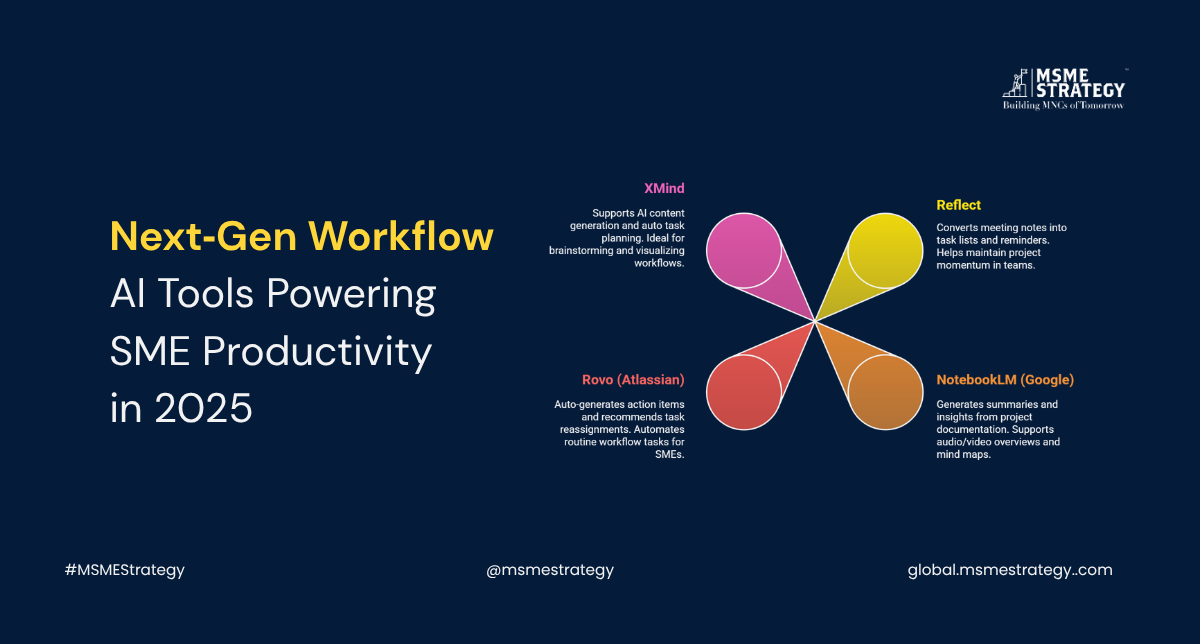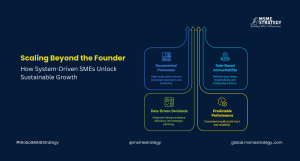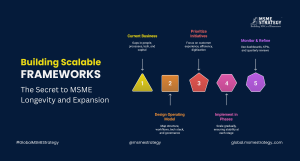In today’s lean, globally distributed SME environments, well-orchestrated workflows and clear task visibility are essential. Traditional tools like Trello, Asana, ClickUp, and Notion have long enabled visual task boards, documentation, and collaboration. Yet in 2025, AI-infused assistants are taking productivity to the next level—helping SMEs reduce friction, accelerate decisions, and maximize team impact.
Core Workflow Tools (Foundation)
- Trello, Asana, ClickUp: Offer Kanban boards, timelines, task assignments, and transparent progress tracking.
- Notion: Blends documentation, project plans, wikis, and databases with AI‑powered content summarization and style refinement. (Reddit)
These remain indispensable for defending visibility, accountability, and collaborative clarity across global SME teams.
AI Tools That Are Trending: Reflect, NotebookLM, Rovo, XMind
Reflect
An emerging AI note‑taking and reflection tool (often used alongside tools like Notion or Trello) that converts meeting notes into task lists, action items, and follow‑up reminders. It helps keep project momentum moving—even in asynchronous teams.
NotebookLM (Google)
An AI-first notebook embedded within Google Workspace. It ingests project documentation, stakeholder briefs, meeting notes, and generates summaries, strategic insights, and even presentation-ready overviews. Its Studio now supports Audio and Video Overviews, and native mind maps for structured idea visualization.
Rovo (Atlassian)
Now bundled with Jira and Confluence, Rovo is a free AI assistant that auto‑generates action items, flags risks, recommends task reassignments, and automates routine workflow tasks—empowering SMEs to optimize collaborative workflows effortlessly.
XMind (AI‑Enabled Mind Mapping)
Latest versions support AI content generation, auto task planning, and structured mind-maps. Ideal for brainstorming, visualizing workflows, and integrating with tools like Notion or ClickUp.
Strategic Value for Global SMEs
- Lean Teams Gain Leverage: Reflect and NotebookLM convert scattered inputs into actionable agendas and summaries.
- Transparency & Accountability: With Rovo’s recommendations and smart auto-updates in Asana or Jira, teams stay aligned across time zones.
- Workflow Bottleneck Reduction: AI-driven insights proactively flag risks and suggest prioritization changes.
- Structured Idea Generation: XMind’s visual frameworks remove ambiguity and foster shared clarity.
- Multimodal Accessibility: Audio/video overviews from NotebookLM make insights available to diverse, distributed teams without overloading text-based communication.
Practical Steps to Apply Key Tools
- Select Core Platform + AI Layer
Pick a base platform (e.g. Notion or Asana) and pair it with an AI assistant like Reflect, NotebookLM, or Rovo based on your ecosystem. - Define Structure & Integration
Clearly map workflows—using mindmaps in XMind, action items in Reflect, and automated triggers via Rovo or Asana AI. - Activate AI Features Strategically
Enable features such as Rovo’s risk detection, NotebookLM’s audio/video overviews, or Reflect’s automated follow-ups. - Train Your Team
Educate employees on how to interact with AI agents—for example, using plain‑language commands in Asana AI or query prompts in NotebookLM. - Review & Iterate
Quarterly, audit task completion rates, average delays, or time saved via AI‑driven workflows, and refine tool combinations accordingly.
At MSME Strategy Consultants (global.msmestrategy.com), our expert consultants help SMEs worldwide implement AI-enhanced workflow strategies tailored to their scale and global footprint.
#GlobalMSMEStrategy #AIforSMEs #WorkflowAutomation #SMEProductivity #ProjectManagementAI #Reflect #NotebookLM #Rovo #XMind






